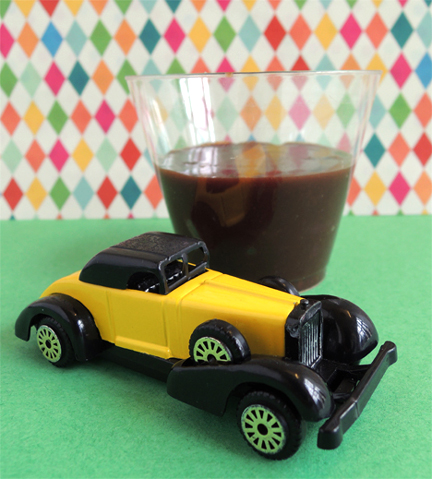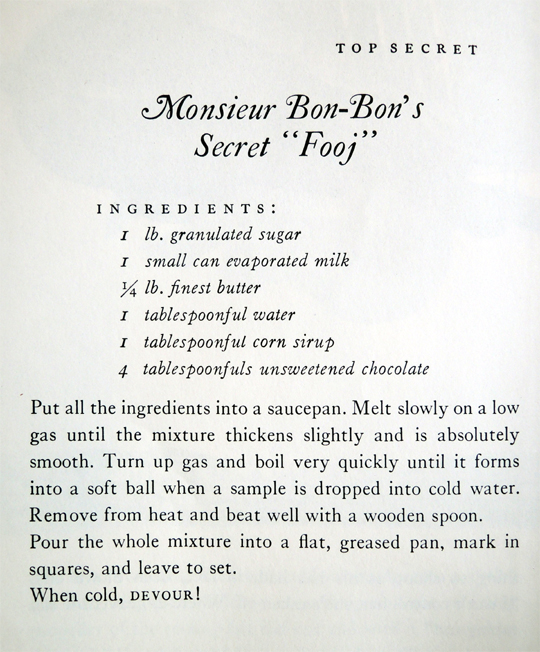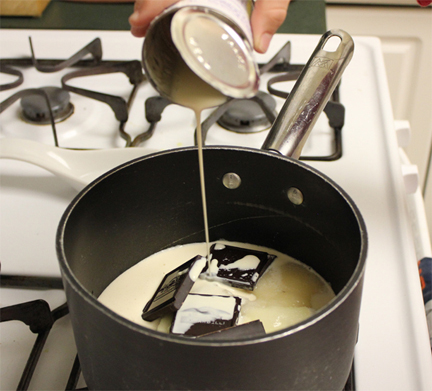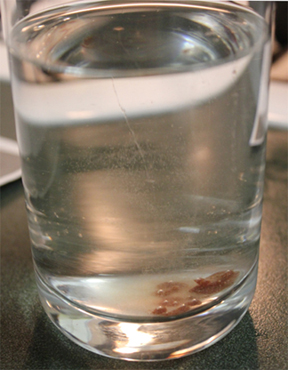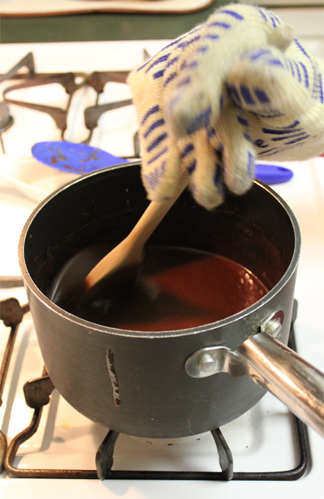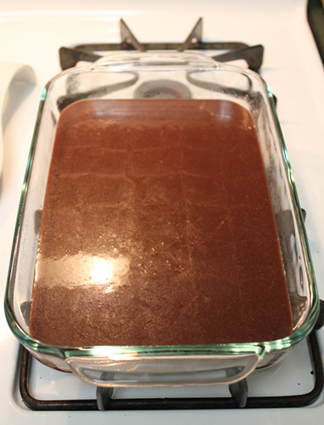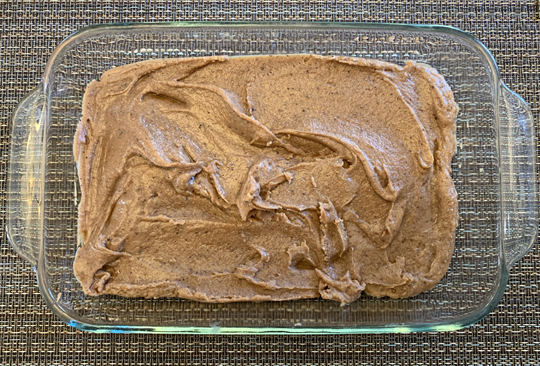 Today, Katie is broadcasting from our official blog test kitchen (which wow, looks remarkably like her own kitchen!). She’s tackling her old culinary frenemy…that cursed confection, sneaky sweet, diabolical dessert otherwise known as…FUDGE. Take it away, Katie!
Today, Katie is broadcasting from our official blog test kitchen (which wow, looks remarkably like her own kitchen!). She’s tackling her old culinary frenemy…that cursed confection, sneaky sweet, diabolical dessert otherwise known as…FUDGE. Take it away, Katie!
It’s hard to believe it has been nearly six years since I tried and spectacularly failed at making Monsieur Bon-Bon’s Secret “Fooj” from the book Chitty-Chitty-Bang-Bang by Ian Fleming. Six years! C’est impossible! But after six years, dear blog readers, it’s finally time. Let’s trying making fudge again.
I found a recipe in a charming book titled Peeny Butter Fudge, written by Toni Morrison, Slade Morrison,and illustrated by Joe Cepeda (Simon & Schuster, 2009 – read here by Sankofa Read Aloud). There’s nothing better than spending the afternoon with Nana. She adds love and extra excitement to play time, story time, even nap time! But the best part is helping Nana make her yummy, delicious fudge before Mom comes home.
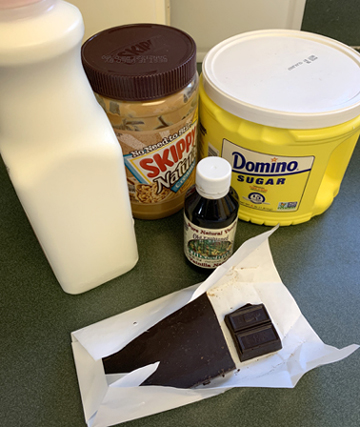 With just five ingredients and clearer directions than the “fooj” recipe, my confidence was high. I carefully followed the instructions exactly as they were written. When it came time to let the milk/sugar/chocolate mixture boil for five minutes, I set a timer and pulled out my candy thermometer (purchased when I attempted to make acid drops from Harry Potter). I remember reading that fudge must reach a certain temperature to solidify and have the correct texture, so I watched the thermometer closely. I also admit I was a bit nervous when the mixture needed to boil for longer than five minutes before it made a tadpole shape when dropped into a glass of cold water.
With just five ingredients and clearer directions than the “fooj” recipe, my confidence was high. I carefully followed the instructions exactly as they were written. When it came time to let the milk/sugar/chocolate mixture boil for five minutes, I set a timer and pulled out my candy thermometer (purchased when I attempted to make acid drops from Harry Potter). I remember reading that fudge must reach a certain temperature to solidify and have the correct texture, so I watched the thermometer closely. I also admit I was a bit nervous when the mixture needed to boil for longer than five minutes before it made a tadpole shape when dropped into a glass of cold water.
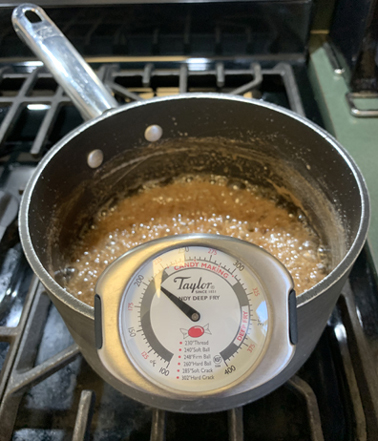 While the pot was taking its cold-water bath in the kitchen sink, a series of unfortunate events drew my attention away from the task at hand. The pot must have rested in the sink for too long because when I tried to add the peanut butter, the fudge was hard. Absolutely rock hard. I frantically tried putting the mixture back on the stove to see if it would soften up as I mixed in the peanut butter, but the result was a colossal, clumpy mess. Fudge failure, yet again.
While the pot was taking its cold-water bath in the kitchen sink, a series of unfortunate events drew my attention away from the task at hand. The pot must have rested in the sink for too long because when I tried to add the peanut butter, the fudge was hard. Absolutely rock hard. I frantically tried putting the mixture back on the stove to see if it would soften up as I mixed in the peanut butter, but the result was a colossal, clumpy mess. Fudge failure, yet again.
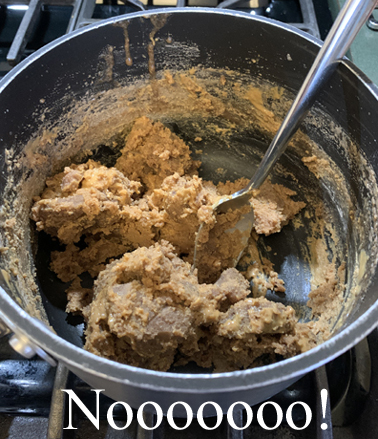 I wasn’t about to give up on Nana and her peanut butter fudge, so I started over from scratch. Armed with the knowledge from both of my failures, I focused wholly and completely on the fudge and finding the sweet spot of victory. And somehow, against all odds, I did it. I made fudge!
I wasn’t about to give up on Nana and her peanut butter fudge, so I started over from scratch. Armed with the knowledge from both of my failures, I focused wholly and completely on the fudge and finding the sweet spot of victory. And somehow, against all odds, I did it. I made fudge!
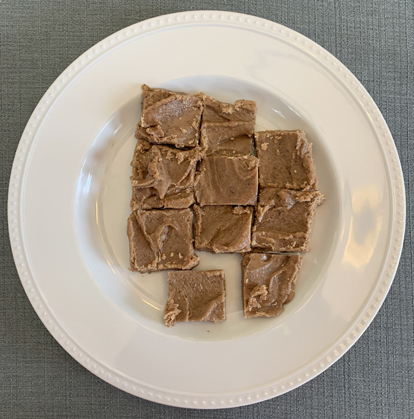 Peeny Butter Fudge is delightfully rich and provides the perfect flavor mixture of chocolate and peanut butter, which is one of my favorite dessert combinations. I provided samples for my teen son and his neighborhood friends to try, and all of them said “this is so good!” My son also said it tastes exactly like the filling in Reese’s Peanut Butter Cups. Collectively we give Peeny Butter Fudge our official seal of tastiness approval.
Peeny Butter Fudge is delightfully rich and provides the perfect flavor mixture of chocolate and peanut butter, which is one of my favorite dessert combinations. I provided samples for my teen son and his neighborhood friends to try, and all of them said “this is so good!” My son also said it tastes exactly like the filling in Reese’s Peanut Butter Cups. Collectively we give Peeny Butter Fudge our official seal of tastiness approval.
There’s an art to making fudge. You must balance a fine line between delicious success and disastrous failure. I’m very grateful my third attempt was a charm. And though I still consider myself an amateur fudge maker, I’m definitely planning on making Nana’s fudge again.

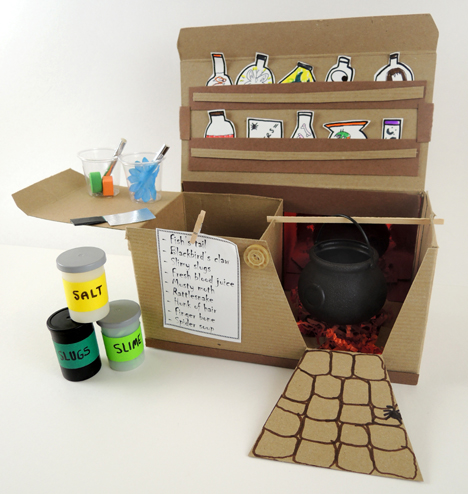
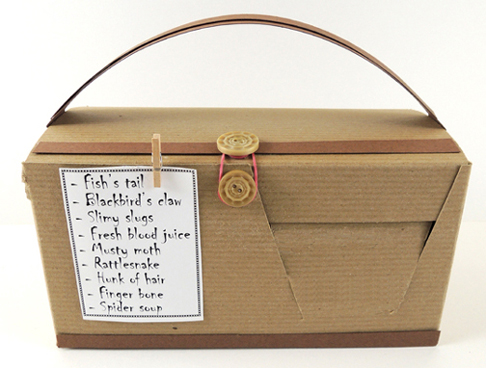 We read One Witch, written by Laura Leuck, and illustrated by S.D. Schindler (Walker & Company, 2003). A witch visits her ten sets of (unusual) friends to gather ingredients for the ultimate brew. She cooks it up, sends out invitations via bat, and a massive party ensues – including a special bowl for you! This is a fantastic counting book, plus a real family favorite. My kids asked me to read this book to them year round!
We read One Witch, written by Laura Leuck, and illustrated by S.D. Schindler (Walker & Company, 2003). A witch visits her ten sets of (unusual) friends to gather ingredients for the ultimate brew. She cooks it up, sends out invitations via bat, and a massive party ensues – including a special bowl for you! This is a fantastic counting book, plus a real family favorite. My kids asked me to read this book to them year round!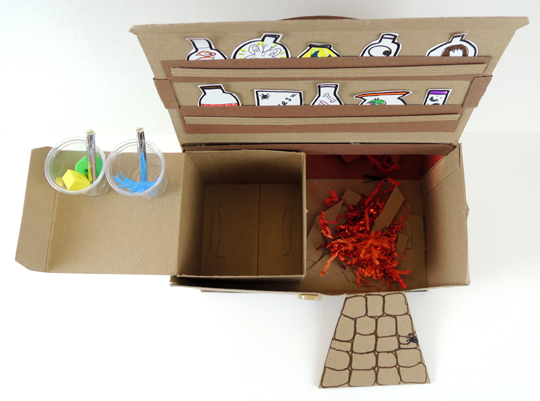 As you can see, it’s a box within a box. The left side of the kitchen is the unfolding countertop/secret storage area, the the right side is the fireplace for the cauldron (which we stoked with brown poster board logs and red
As you can see, it’s a box within a box. The left side of the kitchen is the unfolding countertop/secret storage area, the the right side is the fireplace for the cauldron (which we stoked with brown poster board logs and red 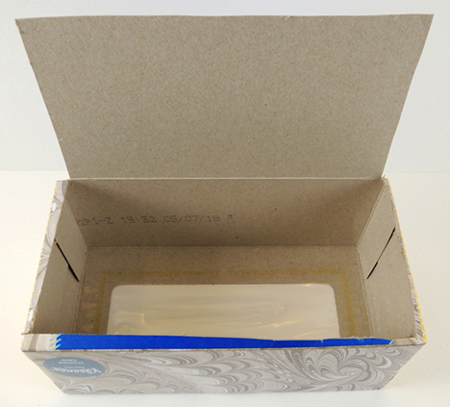 The issue, of course, is you have a big hole in the floor of your kitchen. No problem! Just glue or tape a piece of poster board over the hole (shown here in yellow):
The issue, of course, is you have a big hole in the floor of your kitchen. No problem! Just glue or tape a piece of poster board over the hole (shown here in yellow):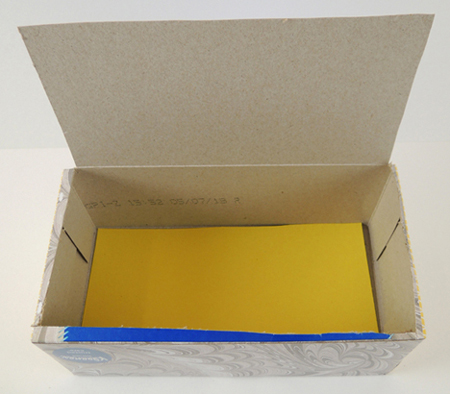 To make the unfolding countertop/secret storage space, flip a small tissue box, cut the bottom to make a hinged lid, cut the box down to the proper height, then attach it inside the large box. Cut the V-shaped hearth door and you’re set!
To make the unfolding countertop/secret storage space, flip a small tissue box, cut the bottom to make a hinged lid, cut the box down to the proper height, then attach it inside the large box. Cut the V-shaped hearth door and you’re set!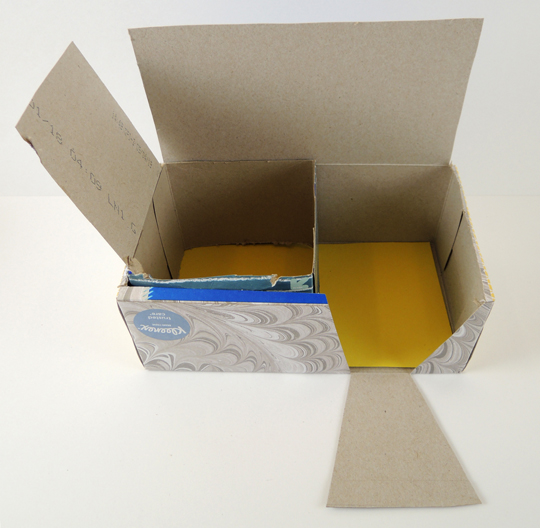 The shelves along the back of the kitchen are basic poster board pockets. Cut and color the various bottles in your template to stock your kitchen:
The shelves along the back of the kitchen are basic poster board pockets. Cut and color the various bottles in your template to stock your kitchen: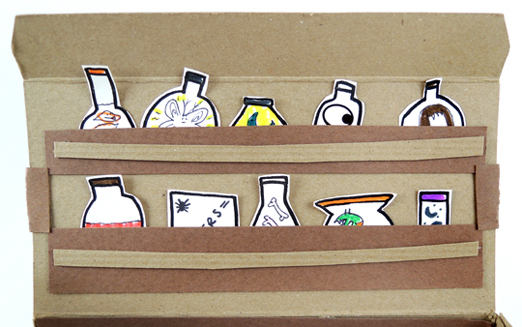 In the secret storage are little plastic sample cups for mixing, snippets of drinking straws, plus (optional) ingredient bottles repurposed from old-school film canisters. We filled ours with
In the secret storage are little plastic sample cups for mixing, snippets of drinking straws, plus (optional) ingredient bottles repurposed from old-school film canisters. We filled ours with 